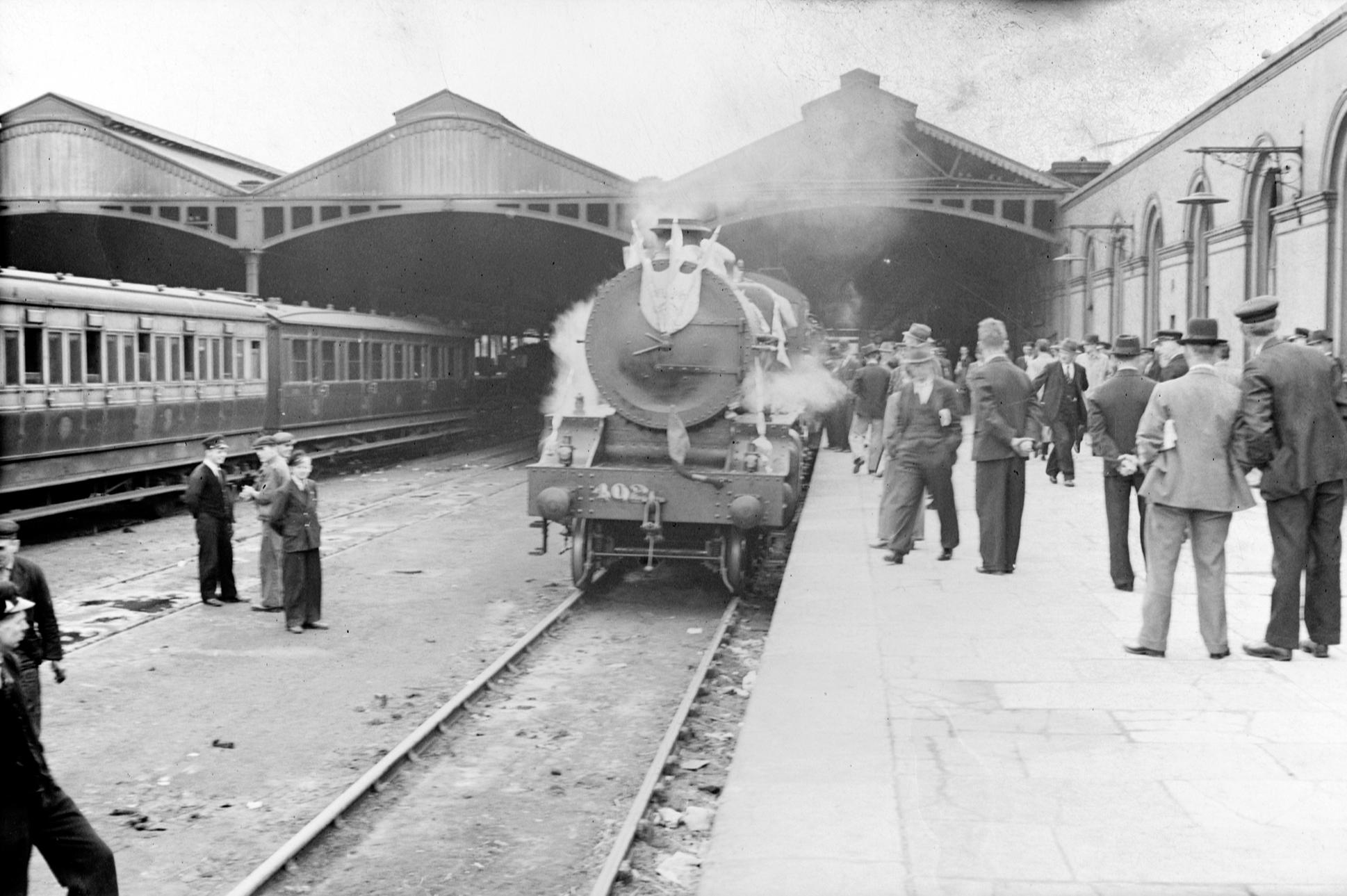By Joseph E.A. Connell Jr
On 8 December 1924, the Dáil formally approved the merger of all railway companies in Saorstát Éireann to form the Great Southern Railway Company.
During the revolutionary period the railways suffered considerably at the hands of all parties. In the 1916 Easter Rising, stations in Dublin were taken over by the Irish Volunteers but were later evacuated. Then the military authorities restricted passenger traffic and used some of the stations as barracks. Tracks were blown up in several places and a cattle train was derailed. Certain areas were closed by the authorities and markets were stopped, so that the railways lost passenger and goods traffic, and certain lines were closed altogether.

During the Civil War tracks were torn up, bridges destroyed and trains derailed or fired upon. A Railway Protection, Repair and Maintenance Corps was formed, and temporary repairs were made. Blockhouses were set up along the lines, and armoured trains were run. Indeed, few railways have had so many difficulties with which to contend as those of Ireland.
Provision for the creation of the company was made by the Railways Act 1924, which mandated the amalgamation (in the case of the four major railway companies) and absorption (of the 22 smaller companies) of all railways wholly within the Irish Free State. Only cross-border railways, most notably the Great Northern Railway (GNR), remained outside its control. The Great Southern and Western Railway Company, the Midland Great Western Railway Company of Ireland and the Cork, Bandon and South Coast Railway Company agreed to terms for amalgamation and formed the Great Southern Railway Company (GSR) by way of the Railways (Great Southern) Preliminary Amalgamation Scheme of 12 November 1924. The Dublin and South Eastern Railway (DSER) joined these companies under the Great Southern Railways Amalgamation Scheme of 1 January 1925. The GSR’s headquarters were established at Kingbridge (now Heuston) Station, with Inchicore becoming the chief engineering works.
The GNR, which was not merged as part of the scheme, forms roughly a gigantic ‘Y’, with three of Ireland’s chief ports at its three ends—Dublin, Belfast and Derry. In the comparatively small area that it served, the railway crossed the border at nine places. The GNR terminus in Dublin was at Amiens Street (now Connolly) Station.
In the 1950s locomotives switched to diesel in both juristictions, apart from the electrified suburban rail in Dublin. From the beginning until today, railway conditions in Ireland have been different from those in England, Scotland and Wales. The first railways in Ireland were built to carry passengers rather than goods, because there was neither heavy mineral traffic nor a big output of manufactured articles to transport.
One of the anomalies of the Irish railway system is that the standard gauge of 4ft 8½in. is not used in Ireland. During the war of 1914–18, when English rolling-stock was used in France, the Irish stock could not be requisitioned because of this difference. The Irish gauge of 5ft 3in. is found also in the states of Victoria and South Australia, and in Brazil.
The Transport Act of 1944 finally dissolved the GSR and transferred its assets, together with those of the Dublin United Transport Company, to Coras Iompar Éireann (CIÉ) on 1 January 1945.
Joseph E.A. Connell Jr is the author of The Terror War: the uncomfortable truths of the Irish War of Independence (Eastwood Books, 2022).
